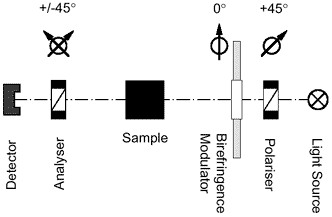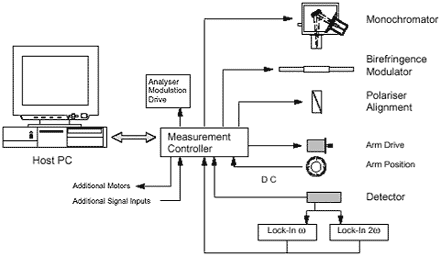


|
Instead of mechanically rotating a polariser to analyze the ellipticity of the reflected light beam, the incident light is modulated by the Birefringence Modulator. This element is operated in longitudinal resonant vibration at a frequency of 50 kHz, but has no mass motion. Because there are no moving parts, there are no beam deflections which plague rotating element instruments. The Birefringence Modulator is a balanced 3 component device. A gauge crystal provides feedback on the oscillation amplitude which leads to a high long term stability that is independent of environmental parameters such as temperature. The exact reproducibility of the modulation amplitude eliminates the need for frequent recalibrations or elaborate cross-checking of the phase shift. This is especially important for spectroscopic measurements where the modulation amplitude is tracked across the spectrum. With a modulation frequency of 50 kHz the instrument can work with response times as short as 1 ms. The high frequency modulation moves the signal away from 1/f noise region. Phase lock detection further reduces the noise, leaving photon shot noise as the only limiting factor to the instrument sensitivity. Further details on the modulator method are contained in a Beaglehole instruments Technical note. |
